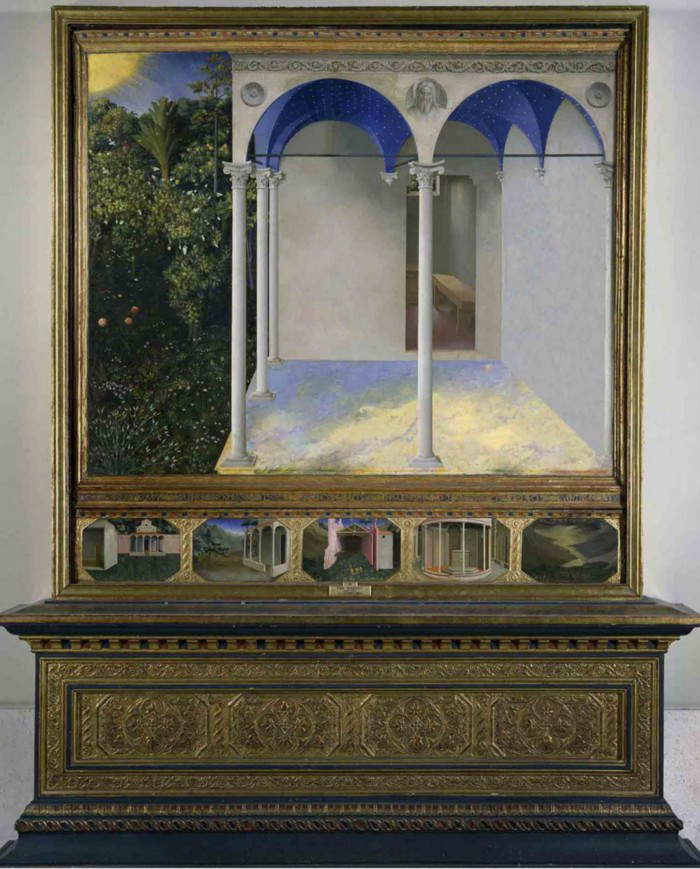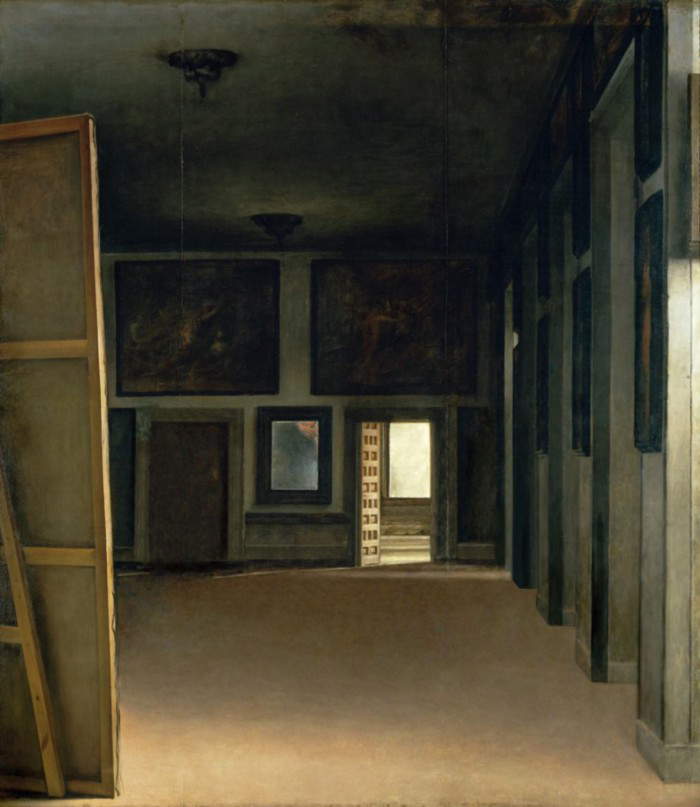The difficult and gigantic challenges museums are facing right now, all over the world, are making headlines. Covid-19 kept museums in every corner of the globe closed and, as expected, left them with nothing but their online presence. Now more than ever it matters to bring back the museum audience that was missing and continues to be missing for a variety of reasons. Google Arts & Culture seemed like the ideal solution, and even if it succeeded at first as the portal of excellence for museums during the lockdown, MuseumHack quickly made it clear that it may not have been quite that. It was already known that virtual visits continued to be a rather low percentage over the span of a decade. The fact is that without a digital strategy, the relevance so coveted by museums during the current crisis (the vast majority without a visitor audience) becomes difficult to manage. The strategies needed may not only concern virtual visits, which would be only one piece, albeit an important one, of a wider range of solutions to be implemented more organically than ever before, step by step so as to manage in parallel the immediate needs on the one hand and the effectiveness of the solutions adopted in the medium and long term. Finestre Sull’Arte took stock of the situation a few weeks ago.
Museums such as the Louvre, the Metropolitan and the British Museum (to name a few), have the knowledge, resources and expertise to adapt and react, often drawing on the social presence they have built up over the years. Even before the days of Pandemic, they were the ones exploring a possible virtual-physical identity, at least in their ethos. We can certainly mention the Metropolitan, which considers its online presence to be its fourth location (in addition to the Main Building, the Cloisters and the Met Breuer). The Museo Nacional del Prado in Madrid has an online presence that aspires to stand at the head of a more open and accessible museum experience in a broader sense, using data to improve research, publications, editorial initiatives, and communication, rather than having the data itself repurposed for reuse by third parties.
The facts are quite clear. Much of what is being discussed in the area of solutions for these difficult times has already been tried and in some cases implemented. And this is certainly the case with the immediate response that started more from what museums already had in the pipeline that could be adopted. TheUffizi Galleries’ #UffiziDecameron project, for example, was nothing less than an online tour. Its branding ensured that it was perceived as a well-prepared plan guided by the face and voice of the Uffizi director himself, Eike Schmidt. Schmidt’s stated goal was clear: “We avoid all contagion except that of beauty.” Certainly very timely and incisive. In a sense, a guided tour by the director is one of the rarest occasions one can come across inside a museum, but this kind of online presence is not entirely new. The Museo Italia project conceived by then-Vatican Museums director Antonio Paolucci, broadcast in 2015, is very much in line with this approach. In any case, museums have been using live streaming to showcase their works for some time now. In some cases, curators and museum professionals have even taken questions during the live streams, making the presence much more engaging and interactive.
But is this also the case abroad? I choose here the case of Beijing’s MuseumX forced to postpone its reopening date, and which has since launched an interactive virtual space, giving people the opportunity to explore the institution from their homes. This is not one of the many virtual tours similar to those available on Google Arts & Culture. The site, created by artist Pete Jiadong Qiang, is set up as a kind of game where users become players freed from the laws of physics and architecture as soon as they begin to move through the museum space.The project was not conceived as a reaction to the access restriction measures necessitated by the coronavirus pandemic, but it certainly has been put to good use. As a novel alternative to the traditional museum experience, the site complements the museum’s physical activities and, as rightly pointed out by museum curator Poppy Dongxue Wu, seeks to break down the ways in which people hitherto used museum sites. In Dongxue Wu’s own words, “I am suspicious of how, today, online platforms of museums still follow the logic of Web 1.0, producing content with minimal interactivity...gamification of the experience is part of the goal of stimulating participation and curiosity.” Certainly this is one of the most interesting developments as far as the web interface of museums is concerned. And it is certainly a promising project and one to watch!
 |
| José Manuel Ballester, A place for rebirth (2009; digital print on canvas) |
Small and medium-sized museums, on the other hand, have struggled to breathe, and some should be commended for their courage in taking matters into their own hands. It may be the case with the principle of survival of the fittest, but this moment could also be the catalyst for a shift in culture that could permanently alter the way museums define themselves and operate. Some have chosen to hibernate completely and wait out the storm. Understandably, many are feeling the severe impact of the drastic reduction in revenue that comes from ticketing: less revenue means fewer events and programming. Those without financial or government resources to weather the storm could face the risk of closing. Are we facing the risk of ending up with a severely reduced museum landscape in the post-storm scenario? There is increasing talk in the Netherlands that a significant number of museums will not remain permanently closed: that’s 100 museums, almost a quarter of the Dutch museum ecology, many of which are small or medium-sized.
Lessons learned the hard way?
The answer, at least in part, comes from theOakland Museum in California, and it is one that paradoxically was published just weeks before the World Health Organization declared a coronavirus pandemic. For this museum, success is measured by social impact. In short, because of its data, the museum decided to avoid focusing too much on increasing and diversifying its audience. Instead, the museum tried to give an answer to a very simple question, “what is the difference we are trying to make in the world?”
The need to adapt, change, and rethink could be a matter of survival, and a post-pandemic scenario could leave us with a new genre of museum netizens. So there are three possible reactions in the medium and long term, which have been discussed at length and certainly may not be new to many.
 |
| José Manuel Ballester, A place for Annunciation (2007; digital print on canvas) |
A. Consider your assets as a resource that you can make available not only to experts and connoisseurs
However, it is not a matter of renting rooms or hosting events that are divorced from the context in your museum. The problem with these short-range solutions is that they are rarely built on the museum’s unique selling proposition . Instead, it is about broadening your expertise to include nontraditional expert users, and in this way the museum can broaden its potential audience, becoming relevant to a wider and wider audience. There are stories to be told, ideas to be explored, languages to be learned, information to be given--that go far beyond the narrow reading of the museum’s collection.
B. Look for opportunities to negotiate meaning more than to declare meaning
This means triggering cultural change. Curators with an academic background in the discipline that pertains to museum collections often find it difficult to abdicate their official tones when it comes to shaping meanings and recognizing values. By choosing to negotiate meaning and bringing to life a polyphonic set of opinions and reactions beyond the official versions, your museum can open itself up to a broader sense of ownership and participatory experiences that, over time, can transform the institution-museum into a public cultural space.
C. Consider your museum’s identity as both physical and virtual at the same time.
With an expanded expert base to include a more diverse and interdisciplinary portfolio , and with curatorial expertise becoming more focused on negotiating meanings and reinforcing participatory experiences, a physical-virtual experience should not just be a stated ambition.
It could be about building bridges with your audiences to reach them during moments when you have a story to tell that is relevant to the current moment. You can gain the flexibility to provide services that your community needs and that can come to life from your main resource (your collection). Your virtual identity can be much more articulated and capable of taking on a much broader scope, so that it includes more than just a vast program of presentations, live streaming and interactive experiences that are audience-centered and useful for the current moment. In short, it would be about recognizing empathy as your guiding value. Your museum exists for your community, and the people in it will become your people when you are there for them when the time comes!
All of these could relegate the traditional museum visit to becoming nothing more than a fraction of a much broader, longer, and more enriching relationship.
 |
| José Manuel Ballester, Royal Palace (2009; digital print on canvas) |
The images in the article are by Spanish artist José Manuel Ballester.
This opinion piece is a version of one published in The Humanist Museum also reported by the American Alliance of Museums as recommended reading.
Warning: the translation into English of the original Italian article was created using automatic tools. We undertake to review all articles, but we do not guarantee the total absence of inaccuracies in the translation due to the program. You can find the original by clicking on the ITA button. If you find any mistake,please contact us.